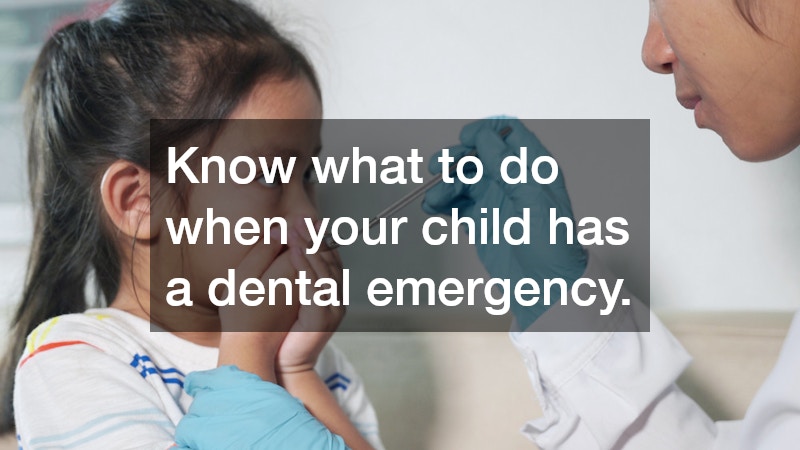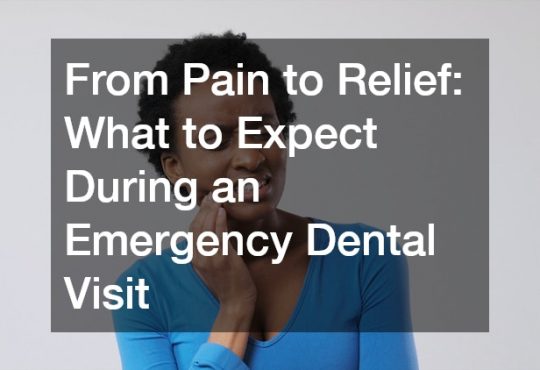
How to Tell if Your Child Needs to See an Emergency Pediatric Dentist
Disclaimer: The material provided is designed to inform readers about oral health and preventive care. It should not be considered medical advice. Consult a registered dentist for guidance specific to your oral health needs.
As a parent, few situations feel more alarming than when your child experiences sudden pain or an injury to their teeth or mouth. Understanding when to seek emergency dental care can make a critical difference in preserving your child’s oral health and preventing long-term complications. Children are naturally active, and dental injuries or unexpected pain can occur at any time. Knowing how to identify a true dental emergency and when to contact an emergency pediatric dentist helps ensure your child receives the prompt, specialized care they need to stay healthy and comfortable.
What Constitutes a Dental Emergency for Children?
Defining Dental Emergencies
A dental emergency in children refers to any situation that involves severe pain, bleeding, or trauma to the teeth, gums, or mouth that requires immediate professional attention. Unlike routine dental issues that can wait for a scheduled appointment, emergencies must be addressed quickly to prevent infection, alleviate pain, or save a tooth.
Examples include a knocked-out or fractured tooth, uncontrollable bleeding from the gums, or swelling that interferes with eating, breathing, or speaking.
Common Causes of Pediatric Dental Emergencies
Children often experience dental emergencies due to falls, sports injuries, accidents during play, or biting on hard objects. Tooth decay and gum infections can also escalate suddenly, causing significant discomfort. In some cases, orthodontic devices or dental restorations may become loose or broken, creating pain or risk of injury inside the mouth. Poor oral hygiene, combined with sugary diets, can further increase the likelihood of infections or decay that may turn into urgent issues.
Signs Your Child Needs Immediate Dental Attention
Certain symptoms indicate that your child needs to see an emergency pediatric dentist right away. These include persistent or severe tooth pain, a visibly cracked or displaced tooth, bleeding that does not stop after several minutes, or swelling in the mouth or face. If your child complains of sensitivity to hot or cold that worsens quickly or has difficulty chewing or opening their mouth, these could be signs of infection or nerve involvement that require urgent care. Additionally, any trauma that affects how your child’s teeth fit together should be evaluated immediately.
Differences Between Adult and Pediatric Dental Emergencies
While dental emergencies can occur at any age, children’s teeth and jaws are still developing, which makes their treatment needs unique. A pediatric dentist specializes in handling growing teeth and managing dental injuries with consideration for future tooth development. For instance, a knocked-out baby tooth is treated differently from a permanent tooth. Pediatric dentists also focus on making the experience as comfortable as possible, using approaches tailored to children’s comfort and emotional needs.
How to Assess the Severity of a Dental Issue
Assessing whether a dental issue is an emergency involves observing both visible symptoms and your child’s behavior. If your child is in severe pain, has bleeding that will not stop, or if the injury involves a visible break or dislocation of a tooth, emergency care is necessary. On the other hand, minor sensitivity or a small chip that does not cause discomfort can typically wait until a regular dental appointment. When in doubt, calling your pediatric dentist for guidance is the best step, as they can help determine whether immediate treatment is required.
How Can Injuries to Baby Teeth Be Treated?
Immediate Steps to Take for Dental Injuries
If your child suffers a dental injury, staying calm and acting quickly is essential. Begin by gently rinsing your child’s mouth with warm water to clean the area. If a tooth has been knocked out, avoid trying to reinsert it if it is a baby tooth, as this could damage the developing permanent tooth underneath. Apply a cold compress to reduce swelling and contact your emergency pediatric dentist as soon as possible. For bleeding, gently apply gauze or a clean cloth to the affected area until you can reach the dentist.
Common Treatments for Damaged Baby Teeth
Treatment for injured baby teeth varies depending on the extent of the damage. Minor chips may require only smoothing or bonding to restore the tooth’s shape, while more serious fractures might need crowns to protect the remaining structure. In cases where the tooth root or pulp is affected, the dentist may perform a baby tooth root canal to relieve pain and preserve the tooth until it naturally falls out. Sometimes, if the injury is severe, extraction may be necessary to prevent infection.
When to Visit an Emergency Pediatric Dentist
You should visit an emergency pediatric dentist immediately if your child’s tooth is broken, displaced, or causing severe pain. Even if the tooth is a baby tooth, professional evaluation is important to ensure the surrounding teeth and tissues are unharmed. Waiting too long can lead to infection or interfere with the proper alignment of future permanent teeth. Pediatric dentists are equipped to handle such emergencies promptly and can provide both short-term relief and long-term protection for your child’s dental health.
Implications of Baby Tooth Injuries on Permanent Teeth
Injuries to baby teeth can sometimes affect the development of permanent teeth beneath them. Trauma can cause discoloration, misalignment, or enamel defects in the permanent tooth. This is why prompt assessment and treatment are essential, even if the injured tooth is temporary. Your dentist will likely monitor the affected area over time to ensure that the permanent tooth develops normally and that no hidden damage has occurred.
Prevention Tips for Avoiding Injuries to Baby Teeth
While not all accidents can be prevented, certain measures can greatly reduce the risk of dental injuries. Encourage your child to wear a mouthguard during sports and physical activities. Teach them not to bite on hard objects like ice, pens, or toys. Maintain regular dental checkups to ensure their teeth and gums remain healthy and resilient. Establishing good oral hygiene habits and a balanced diet also helps strengthen their teeth and reduce the risk of decay-related emergencies.
When Is a Toothache a Sign of Serious Trouble?
Identifying the Causes of Toothache in Children
A toothache can range from mild irritation to a sign of a more serious dental issue. Common causes include cavities, gum infections, loose fillings, or emerging teeth. Sometimes, sinus infections or injuries to the mouth can also result in pain that feels like a toothache. Understanding the source of the pain is crucial for determining whether your child needs emergency care.
Symptoms That Accompany Severe Toothaches
If your child experiences swelling around the tooth, fever, or facial pain along with the toothache, it may indicate an infection that needs urgent attention. Difficulty chewing, sensitivity to temperature changes, or pus around the gumline are also warning signs of a possible abscess or deep cavity. In such cases, delaying treatment can allow the infection to spread, potentially leading to more severe health issues.
Home Remedies vs. Emergency Dental Visit
For minor discomfort, you can help your child rinse their mouth with warm salt water and use a cold compress to ease pain. However, if the pain persists or worsens, home care is not enough. Over-the-counter pain relievers may offer temporary relief, but professional treatment is necessary to address the underlying cause. Never apply aspirin directly to the gums or teeth, as this can cause tissue damage.
The Role of Cavities in Pediatric Toothaches
Cavities are a leading cause of tooth pain in children. When decay penetrates the enamel and reaches the inner layers of the tooth, it can irritate the nerves, leading to sensitivity and sharp pain. Regular dental visits, fluoride treatments, and proper brushing habits are key to preventing cavities. Early treatment of small cavities can prevent more serious infections and the need for emergency dental care.
Prevention and Management of Toothaches
Preventing toothaches starts with good oral hygiene practices. Teach your child to brush twice daily with fluoride toothpaste and to floss regularly. Limit sugary snacks and beverages, which feed bacteria that cause decay. Ensure your child has routine dental checkups so any early signs of decay can be treated before they turn into painful problems.
Conclusion
Recognizing when your child needs to see an emergency pediatric dentist is an essential part of responsible parenting. Dental emergencies can escalate quickly, and prompt treatment helps prevent lasting damage while easing your child’s pain. Whether it is a broken tooth, a severe toothache, or an injury to the gums, knowing what to do and when to act ensures your child’s smile stays healthy for years to come. Regular dental care, protective habits, and quick responses to emergencies all contribute to the long-term well-being of your child’s oral health.




